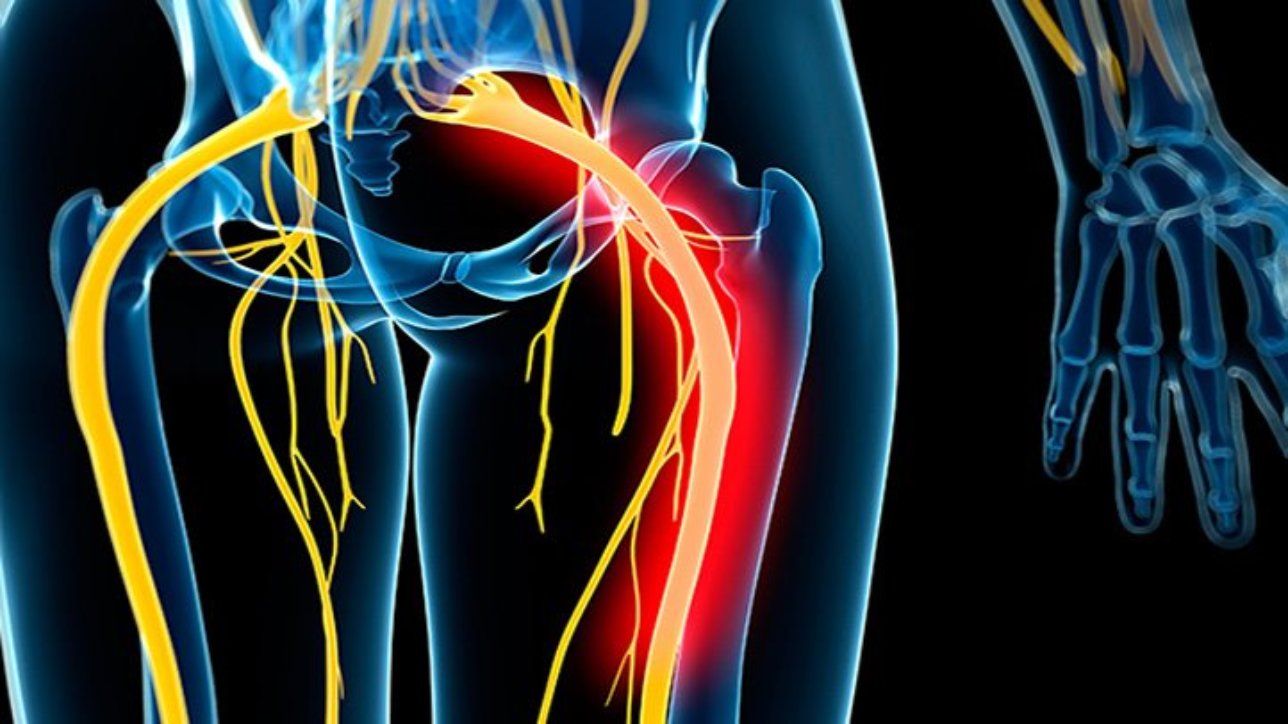Different Types of Pain along the Sciatic Nerve
The patient’s pain and specific sciatica symptoms can usually be traced to where the injured/irritated nerve originates in the lower back. Typical symptoms include:
-
- Sciatica from L4 nerve root
Symptoms of sciatica stemming from this level, the L3-L4 level, in the lower spine may include: pain and/or numbness to the medial lower leg and foot; weakness may include the inability to bring the foot upwards (heel walk). The patient may have reduced knee-jerk reflex.
- Sciatica from L4 nerve root
-
- Sciatica from L5 nerve root
If the L4-L5 segment is affected, the patient may have weakness in extension of the big toe and potentially in the ankle (called foot drop).Symptoms of sciatica originating at this level of the lower back may include: pain and/or numbness at the top of the foot, particularly in the web between the great toe (big toe) and the second toe.
- Sciatica from L5 nerve root
-
- Sciatica from S1 nerve root Symptoms of sciatica originating at this L5-S1 level, which is at the bottom of the spine, may include: pain and/or numbness to the lateral, or outside, of the foot; weakness that results in difficulty raising the heel off the ground or walking on the tiptoes. The patient may have reduced ankle-jerk reflex.
While the above types of symptoms are common, symptoms can vary depending on a number of factors, such as unique anatomical variances, and the degree and characteristics of the specific pathology.
Common Conditions that Lead to Sciatica
A variety of lower back conditions may lead to sciatica. Most commonly, a lumbar herniated disc will cause sciatic nerve pain. Other common disorders that cause sciatic pain include lumbar degenerative disc disease, spondylolisthesis, spinal stenosis, or osteophytes and arthritis in the spine.
Conditions with Sciatica-Like Symptoms
While it is most common for sciatica symptoms to be caused by a problem in the lower back, there are other conditions that may lead to sciatica-like symptoms.
- Pressure on the sacral nerve roots from sacroiliac joint dysfunction
Symptoms of sacroiliac joint dysfunction may include a sciatica-like pain or numbness that is often described as a deep ache felt inside the leg more so than a linear, well-defined geographic area of pain/numbness found in true sciatica.
- Pressure on the sciatic nerve from piriformis muscle
This pressure on the sciatic nerve can tighten and irritate the sciatic nerve (called piriformis syndrome). Symptoms of piriformis syndrome may include a sciatica-like pain and/or numbness in the leg that is usually more intense above the knee, usually starts in the rear rather than the low back, and often spares the low back of symptoms or signs.

